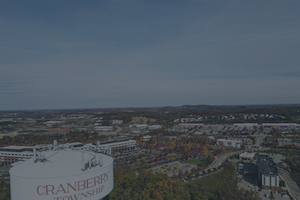2 Seneca Valley school board seats contested in May primary, 3 new faces likely to join board
A handful of newcomers is on the ballot for Seneca Valley School District school board seats in the May 20 primary as the current board members for Regions 1, 4 and 9 are not running for reelection.
Allyson Mazzoni and Nashid Ibn Ali are competing for the Region 1 seat, while Travis Savitt-Kraft and Mark Ruston battle for the spot in Region 4.
Nashid Ibn Ali will appear only on the Republican ballot, but the others will appear on both the Democratic and Republican ballots.
One winner from each ballot will proceed to the November election, where voters will select one person from each region to join the school board at the start of 2026.
Region 1, which includes Cranberry Township East 1 and 2, is represented by Leslie Bredl, and Region 4, which includes Cranberry Township West 4 and West 6, is represented by Fred Peterson.
Another newcomer, Mark Gartner is running unopposed in Region 9. The seat, held by Jeff Widdowson, represents Callery, Harmony and Jackson Township.
Board members Eric DiTullio and Tim Hester are running unopposed in Regions 8 and 5, respectively. DiTullio, the board president, represents Lancaster and Forward townships in Region 8. Region 5 represents Cranberry Township East 3 and West 5.
In total, the district serves Cranberry, Jackson, Forward and Lancaster townships, as well as Callery, Evans City, Harmony, Seven Fields and Zelienople boroughs.
Region 1 is relevant to voters in Cranberry Township East 1 and 2 and is currently represented by Leslie Bredl.
Allyson Mazzoni
Allyson Mazzoni is a resident of Cranberry Township and 2003 graduate of Seneca Valley. Mazzoni was previously an engineer and project manager at Westinghouse, and currently renovates homes in Cranberry Township.
She said her qualifications are unique. She previously served on the Cranberry Public Library board for six years, and currently serves on the Selective Service board and as the Judge of Elections for a precinct in Cranberry.
Nashid Ibn Ali
Nashid Ibn Ali is a resident of Cranberry Township. He has previously worked as a high school teacher through nonprofit Teach for America, and is the CEO of Gainvest, a company that “helps entrepreneurs raise capital.” He said he hopes to “act urgently and compassionately” to combat issues around racism if elected to the school board.
What prompted you to run for this position?
Mazzoni: “In my region, Region 1, the incumbent was not planning on seeking reelection. I learned about this need for a new school board member where I live through the relationships I built at (library), and ultimately decided I could serve my community in this role.”
Ali: “I felt called to run after reading about racial slurs at my daughter’s school. I spoke with the family mentioned in the article and school staff, and what I heard broke my heart. I want to help — not to stir up conflict, but to restore peace.”
If elected, what are some of your goals for the district?
Mazzoni: “My ultimate goal is to ensure that our students become successful members of the community.
“We need to continue to offer them robust opportunities for learning and teach them the tools needed for that success.
“Since the funding comes from our fellow community members in the form of taxes, I think it is also our responsibility to utilize those funds as efficiently as possible.”
Ali: “My primary goal is to develop and implement a districtwide strategy to eliminate racial slurs and foster a school environment rooted in dignity and empathy.
“I also want to promote academic excellence and ensure transparency in decision-making.”
What are the top 3 issues within the school district, and how would you confront those issues?
Mazzoni: “I think there are probably more than three challenges facing the school district, and what the top ones are will vary based on who you ask. I want to go into this with an open mind, and I look forward to learning more about it from current school board members, and any concerned members of the community over the next several months.”
Ali: “Racial abuse among students: I would begin with surveys and data collection. Trust and communication: Open channels with families and staff. Student well-being: Support teachers and counselors.”
If the U.S. Department of Education is eliminated, how will that impact this district?
Mazzoni: “I wish I had a great answer full of certainty for you, but I don't. The reality is I don't know, and I don't think anyone can fully know yet.
“What will be eliminated? What will be moved to other departments? What states will take on? What municipalities will take on? All of this is currently unknown, so the impacts can't be fully appreciated or understood just yet.
“For better or for worse, I will be committed to the same goals I've stated before.”
Ali: “Regardless of federal policy shifts, our priority must remain on serving students well.
“If the Department of Education is eliminated, we must lean on state and local resources to uphold standards.”
How will you assist this district in being fiscally responsible? What's your take on your district's current tax rate and future taxes?
Mazzoni: “As a project manager, this is something that I know I can assist with. I understand budgets and identifying efficiencies, and this is a skill base I hope to bring to the school board.
“Keeping taxes as low as possible so that we can still deliver incredible value to our community, and students, is the ultimate goal. I think everyone in the community agrees that education is important, and also agrees that we want to keep taxes as low as possible.
“Balancing those two goals is the challenge, and one that I know I am capable of delivering on.”
Ali: “I don’t support raising taxes. I’ll advocate for wise use of the resources we have, ensuring every dollar benefits students directly.”
How should Seneca Valley prepare for continued population growth in the district area?
Mazzoni: “Ultimately, the goal is that there is continued population growth in the district. Many of our state districts are seeing the opposite, which creates more challenges for a district and community.
“Continuing to ensure that Seneca Valley is delivering top-notch education is vital to not only the growth of the district, but the continued prosperity of our communities.”
Ali: “Growth should never come at the cost of care.
“We need to grow with wisdom, supporting our teachers, listening to parents and maintaining quality across the board.”
Region 4 includes Cranberry Township West 4 and West 6 and is currently represented by Fred Peterson.
Mark Ruston
Mark Ruston is a resident of Cranberry Township. He is the regional operating manager of the MCS Group, a business consulting organization.
“I feel my vast history of financial experience of managing multimillion dollar budgets allows me to help assure money is being well managed by the school and the board,” Ruston said.
Travis Savitt-Kraft
Travis Savitt-Kraft is a high school math teacher from Cranberry Township. Savitt-Kraft said he has been an educator for 17 years and cares deeply about student outcomes while have an “intricate knowledge of the inner machinations of school systems in general.”
What prompted you to run for this position?
Ruston: “I have always believed that everyone should give back to their community in some small way. I am already involved with the community in other areas and see this as an important extension of this effort.
“I will be an active school board member who will work with the others to come up with solutions to the problems that we face today as well as improve upon those areas where we are already excelling in.”
Savitt-Kraft: “Every good school board needs people that care deeply.
“The pool of applicants may be educator-heavy because we have such practice caring for our charges. I'm ready to serve my community.”
If elected, what are some of your goals for the district?
Ruston: “I would like to see our school district be a top 10% system in the state. I feel Cranberry and the surrounding areas are already a top 10 community in the state and feel our students, parents and taxpayers deserve this type of school district.
“Obviously, home values have a direct link to the local school system, and is a large factor for wanting younger families to want to enter our community.
“I liked that Seneca Valley was a leader in drug testing decades ago, which has been an effective system helping kids avoid drugs.
“Today, social media and the students’ mental health is a concerning issue, and I would like to see Seneca Valley be progressive and bold in tackling these issues.
“Last, I want to see Seneca Valley as a great destination school attracting the very best teachers that want to be part of our system with innovative teaching methods to help educate our students and prepare them for the next steps in life, be it college, trade school or whatever other path they venture down.”
Savitt-Kraft: “I would like to continue having a cohesive school board that can make decisions quickly and effectively in order to improve the district.”
What are the top three issues within the school district and how would you confront those issues?
Ruston: “I mentioned three important items above but would also add one from a taxpayer's point of view.
“We need to consider other ways of funding besides property taxes, which make up the largest part of the school revenue but is a burden on homeowners, especially those on fixed incomes.
“Part of that is the burden of reduced state funding while at the same time, the state is giving the school unfunded mandates that in most cases create additional costs and are not always designed to better educate our students.”
Savitt-Kraft: “Some of those things I would like to see improved are:
“Outcomes for at-risk students: Improve ASL offerings, increase and train support staff, repopulate Big Brother/Sister programs and mentoring.
“Paraeducator ratios and student-to-teacher ratios in general: Make sure that class size is controlled, work with cyber education logistics in order to keep class size low, maintain and retain high qualified paraeducators and paraprofessionals.
“Planning of future renovations that align with our core principles and cut any waste that may increase cost for the community: Review and discuss current and future municipality planning, confirm that all plans align with our goals as a board, review and extend our relationships with contractors to keep costs low.”
If the U.S. Department of Education is eliminated, how will that impact this district?
Ruston: “There is not a large impact yet, as everything is unsettled at this point and everybody is scrambling to learn more.
“My focus is to better understand how much of our tax revenue will be going to educating students as compared to other services and support for the students.
“We keep asking the schools to do more, but at the same time those doing the asking, the state and federal governments not providing sufficient funding to meet those mandates.”
Savitt-Kraft: “Our role as school directors will become even more pronounced. We will need to see where the areas of most need arise and then ameliorate those specific issues moving forward.”
How will you assist this district in being fiscally responsible? What's your take on your district's current tax rate and future taxes?
Ruston: “With my decades of experience managing budgets along with profit and loss statements I feel I am in a great position to understand Seneca Valley’s $170 million budget. But it is important to have the proper staff in place to effectively manage this large budget and the day-to-day operations.
“It's not just fiscal responsibility, but also realizing that we must meet strict state and federal mandates put on the system.”
Savitt-Kraft: “I will continue to work tirelessly in eliminating waste and reducing any unnecessary expenditures.
“As a community member with a child in the district, I understand the burden that taxes place on parents.
“However, when I see the wonderful outcomes that are currently making Seneca a leader in education, I understand that it's worth it.”
How should Seneca Valley prepare for continued population growth in the district area?
Ruston: “Actually, projections for the state shows a decline of high school graduates by 17% in the next 15 years across Pennsylvania, which presents a real problem. Butler (Area) School District once graduated 1,000 students 40 years ago and today graduates half that amount.
“The good news is that Cranberry and surrounding communities continue to grow and are projected to remain on that path for the foreseeable future. Having a great school system plays a major role in that growth, so I want to do my part to see Seneca Valley become a top 10% program in the state and our kids getting some of the best test scores as a result of that.
“Those goals not only come from school board members, but having the best teachers and programs possible as well as coordinated and cooperative effort working with the parents.”
Savitt-Kraft: “Although we are already doing a good job of building new schools, hiring new teachers and approving new plans for our growth, I believe we can also make sure that we grow our para community to facilitate our swelling numbers.
“Moving forward, we will need both the space and the manpower to keep all students' needs served and reach even our most at-risk populations.
“Doing so will cost money, but luckily as our community grows, so will our tax base.
“On the board, I will make sure to continue to treat all stakeholders with the respect that would be expected from a tight-knit community.”
The candidates running for Regions 5, 8 and 9 are unopposed in the primary election.
Region 5 represents Cranberry Township East 3 and West 5; Region 8 represents Lancaster and Forward Townships; and Region 9 represents Callery, Harmony and Jackson Township.
Region 9’s seat is currently held by Jeff Widdowson. Incumbents are running for the other two seats.
Tim Hester
Tim Hester is a resident of Cranberry Township, and has served on the school board since 2013. He represents Region 5.
According to Seneca Valley’s website, he is a business owner in McCandless Township and has previously served on the Cranberry Township Planning Committee, Parks and Recreation Board and Chamber of Commerce.
Hester did not reply to the Q&A that was sent to all candidates.
Eric DiTullio
Eric DiTullio is the school board president of Seneca Valley. He represents Region 8.
He has served on the board since 2009, and has been either president or vice president for 10 of the past 11 years. Residing in Lancaster Township, he is an industrial estimator for an engineering and consulting company.
He also served for four years on the Butler County Area Vocational-Technical School’s joint operating committee.
Mark Gartner
Mark Gartner is a middle school teacher and small=business owner who lives in Jackson Township. He is running for the Region 9 seat.
Gartner said if elected, he would focus on improving learning outcomes, facilities, school security and managing anticipated growth in Seneca Valley communities, while prioritizing open communication with families, teachers and taxpayers.
What prompted you to run for this position?
DiTullio: “I always have said that if you want to complain, you had better be voting, and if you are voting and still complaining, you better get involved.
“This philosophy is what led me to originally run for the board.”
Gartner: “I’m running because I’m invested in this district, and I have a desire to serve. Raising my family here, coaching kids and having a history that includes student teaching at Seneca Valley Middle School.
“I see the challenges of growth, safety and strong schools, and I want to ensure Seneca Valley remains a place where children and communities thrive and families feel secure.”
If elected, what are some of your goals for the district?
DiTullio: “My goals are what they always have been, provide a quality education to our students that will allow them to become productive members of society in the most fiscally responsible way possible.”
Gartner: “I’d work with other board members, administrators, teachers and our community to maintain facilities and school security, improve education outcomes and manage growth responsibly.”
What are the top three issues within the school district, and how would you confront those issues?
DiTullio: “Future planning — We are a growing district, and we need to continue to address the growth and resources that will be required.
“Fiscal responsibility — Being a growing district brings its own challenges. We have a long-term plan and need to make sure that plan is followed and adjusted responsibly in the future.
“Resources — Making sure that we can attract and retain quality staff, provide adequate curriculum and program opportunities and provide adequate facilities in a timely manner and fiscally responsible way.”
Gartner: “Managing growth: With our communities expanding, I’d advocate for smart facility upgrades and staffing plans that keep pace affordably.
“School security: Safety is critical — I’d push for enhanced measures to protect our students and staff.
“Fiscal responsibility: I’d tackle rising costs with transparent budgets, cutting waste and focusing on classroom priorities.”
If the U.S. Department of Education is eliminated, how will that impact this district?
DiTullio: “The direct impact to the district would be minimal. The indirect impact is less certain. Many grants and funding that the district receives comes from indirect federal funding.
“The requirements for special needs student education were administered through the department and how those will continue through the state will need to be understood.
“This district has been and will continue to educate all students in the best approach for each individual student.”
Gartner: “If the Department of Education is eliminated, it doesn’t necessarily mean federal funding for Seneca Valley would disappear.
“Programs like special education could still receive support through other federal agencies, such as the Department of Health and Human Services, or via direct congressional appropriations.
“I’d work with fellow school board members to ensure our district adapts, securing necessary resources to maintain educational quality without overburdening local taxpayers.”
How will you assist this district in being fiscally responsible? What's your take on your district's current tax rate and future taxes?
DiTullio: “I will continue the practices that I have employed though the last 15 years. Understanding the long-term needs of the district and having plans in place to address them is key.
“Our current tax rate is 20% to 80% less than districts with comparable offerings.
“This district has worked hard to minimize the impact to the taxpayer while accounting for growth unlike any of the districts in our area.
“Our amortized 10-year rate being 1/3 of the inflation rate of that period is a testament to that.”
Gartner: “I’d do my part to help ensure every dollar benefits students and the community — cutting excess, not essentials, where possible.
“In my opinion, our current tax rate balances education and affordability, and I’d work to keep future increases minimal through efficiencies and common sense budgeting.”
How should Seneca Valley prepare for continued population growth in the district area?
DiTullio: “We are and have been prepared for population growth.
“We have a plan to address the expansion and renovation of our facilities to accommodate the projected growth of our 100-plus square mile district.”
Gartner: “We need a forward-thinking plan — upgrading facilities and security, adding staff affordably and maintaining our community’s character.
“I’d work with local leaders to anticipate growth and ensure our schools are ready without overtaxing residents.”









